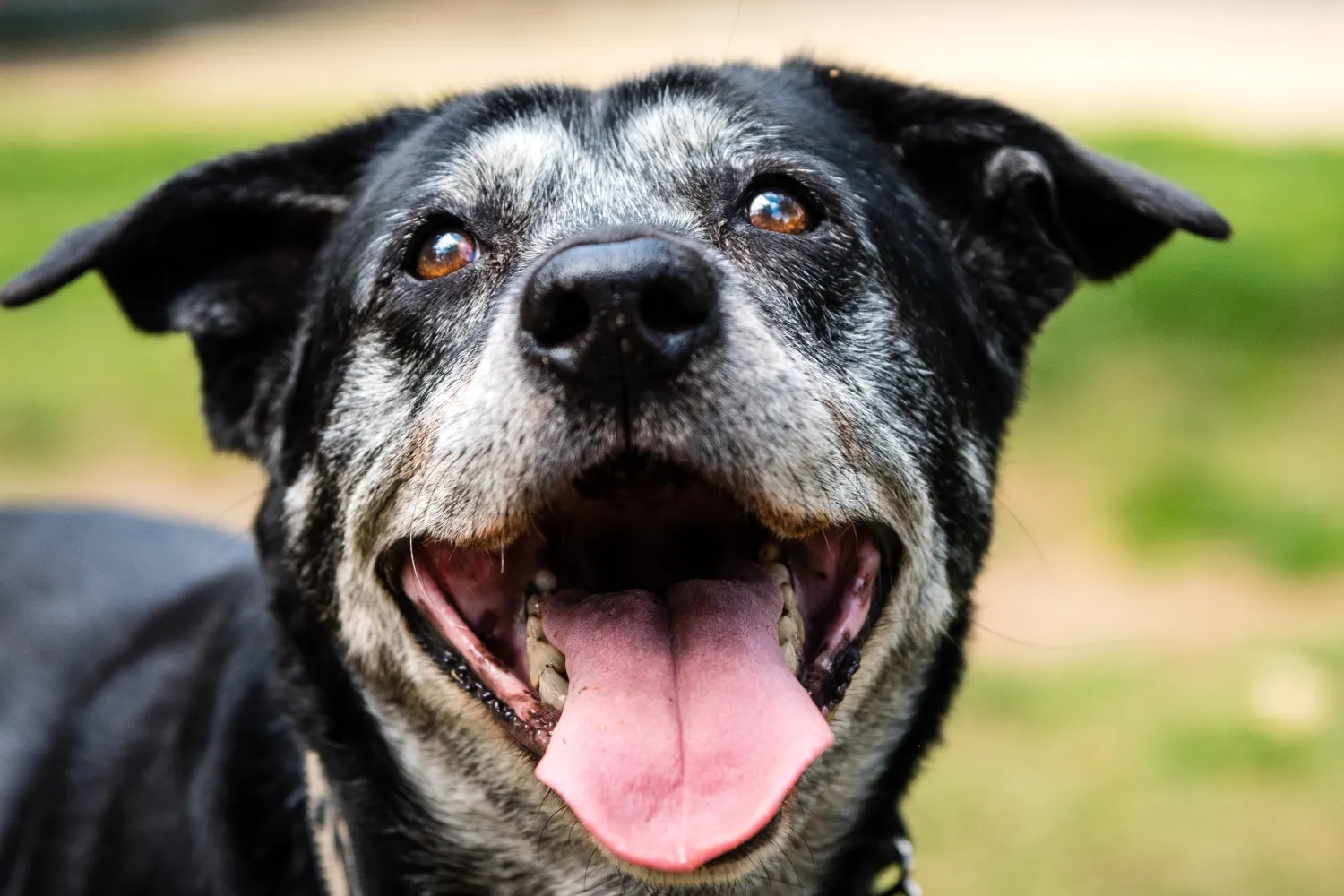
BOGO: buy a box of Longevity15 and get Yummy Combs free!
Shop now and get the BOGO deal today!

Highlights:
The lifespan of your dog is much shorter than your own. Most dog breeds have a life expectancy that ranges between 10 and 13 years.
Considering that your dog will be a puppy, adolescent, and senior dog at some point in their lives, they will likely become a senior sooner than you expect them to. Although a dog’s lifespan is not as long as that of a human, new advancements in veterinary care and research into preserving their longevity are helping our pets live longer.
With the help of their veterinarian, you can play an active role in preserving your dog’s health span, or the ability they have to live healthfully as they age. Supporting their bodies with exercise, proper nutrition, and a powerful supplement, you can give them the ability to live the longest lives possible, so that you can love them as long as possible.
Dogs are considered seniors when they have reached the last 25% of their expected lifespan. If a dog’s life expectancy is 12 years, they would be senior when they reach age 10. Experts agree that the best way to predict a dog’s lifespan is by their size and breed.
The shorter the dog, the longer the lifespan. While experts aren’t sure why smaller dogs live longer, it is suspected that it could be because there is less stress on their bodies and hearts. Larger dogs may also be prone to illnesses that are more difficult to treat due to their size.
Determining your dog’s life expectancy is the first step in understanding how your dog’s needs will change as they age. Once you know their life expectancy, you can anticipate their senior years and help support their ability to age healthfully. With the right care, you may even be able to help your dog exceed their life expectancy.
A small breed dog usually weighs under 22 pounds. Examples of small breeds include dachshunds and pugs. Small breed dogs have a life expectancy between 10 and 12 years. However, many extra-small breeds can exceed this threshold.
Chihuahuas, for instance, are one of the longest living dog breeds, with some living up to 20 years of age. Small dog breeds have a greater tendency to develop weight issues than larger breeds and may have issues with spinal health.
Small breed dogs reach senior citizen age around age 10, and it’s important to find small dog supplements specifically for their size.
Medium-breed dogs weigh between 20 and 60 pounds. Dogs in this category include Australian shepherds, bulldogs, and basset hounds. These dogs have a life expectancy between eight and 10 years.
As such, a medium-breed dog would become a senior dog around six years of age. This may seem too soon, but medium breeds simply age faster. Medium breeds may suffer from arthritis as they age or from other mobility issues, and finding medium-breed supplements will be helpful.
Large-breed dogs are considered those that weigh between 60 and 90 pounds. Examples include boxers, collies, and dalmatians. Large breeds have a life expectancy of between eight and nine years. With a substantially shorter lifespan, large breeds may reach their senior adult life near age six or earlier.
These breeds will need additional care — like large breed supplements — to help them maintain their mobility and activity level, so they can enjoy their senior years as much as their puppy years. Extra-large breeds (those that weigh over 100 pounds), like Great Danes and mastiffs, may only live to be six to seven years old, meaning their senior years would start by age three or four.
Keeping your dog healthy and active through their senior years is the goal, and now, Longevity15™ makes it easy to love your dog even longer.
Science says there’s a way to support your dog’s needs in a big way, starting with the smallest part of their bodies: their cells.
Your dog’s cells make up every tissue, organ, and system in their body, and the active ingredient in Longevity15 is scientifically proven to:
C15:0 helps mammals’ bodies maintain baseline health, but dogs can’t produce it on their own. This means that they must get these good fats from their diet or dog longevity supplements like Longevity15.
Because C15:0 is only found in trace amounts in full-fat dairy products (like whole milk) and some fish, it can be hard to ensure your dog is getting enough. A solution? Longevity15.
Inside each packet of Longevity15 is FA15™, the sustainably-sourced version of pentadecanoic acid. This simple fatty acid has been shown to reduce the number of age-related illnesses in populations of mammals that have higher circulating levels of it.
Giving your dog Longevity15 is one of the smartest decisions you can make to ensure they live their longest, healthiest life.
Your dog’s life is precious. With such limited life expectancies, it makes sense that we want each year of our dogs’ lives to be filled with tail wagging, running, playing fetch, and cuddling. By giving your dog Longevity15 every day, you can pay dividends into your dog’s health and give them a fighting chance to live even longer.
Longevity15 gives your dog’s cells the support they need to continue functioning properly. That translates to overall functionality that can keep your dog healthy for a longer time.
Sources:
Senior Status? Understanding Your Senior Pet’s Life Stage | AAHA
When Is a Dog Considered a Senior? | PetMD
Chihuahua Dog Breed Information|American Kennel Club|Dog Breeds | Chihuahua
Updates, coupons, deals, and more!
Type anything...
We use cookies to provide you the best possible experience on our website. You consent to the usage of cookies by continuing to view our website. See our Privacy Notice for more information.